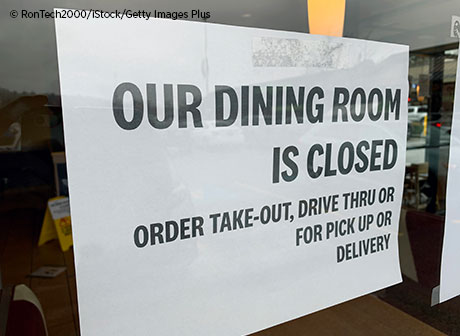Jobs Hardest Hit by the Pandemic

The COVID-19 pandemic has substantially affected labor markets. As noted in a recent Regional Economist article, more than 33 million U.S. workers applied for unemployment insurance between mid-March and the last week of April. Furthermore, the unemployment rate jumped from 3.5% in February to 14.7% in April.
Senior Economist Maximiliano Dvorkin discussed how the disruption in U.S. labor markets is a result of restrictions on people’s activities. “These safety measures have directly affected many businesses, particularly those that involve direct contact with customers or clients, such as those in the leisure and hospitality sector, but also indirectly through lower demand,” he explained. Dvorkin used data from the Bureau of Labor Statistics to look at which industries and occupations were most affected by the pandemic between February and April.
Employment Losses by Industry
Dvorkin found that employment declined the most between February and April in the following sectors:
- Leisure and hospitality—which includes firms that provide entertainment and recreation services as well as accommodation and food services—saw employment decline by 48%.
- Other services—which includes activities such as repair and maintenance as well as personal services (e.g., barber and beauty shops)—lost 22% of its jobs.
In contrast, employment in the financial services and the government sectors declined only slightly between February and April. A possible explanation is these sectors were well prepared to provide services remotely and include jobs with the most potential to be done from home, Dvorkin noted.
In terms of unemployment, Dvorkin found that the number of unemployed people whose last occupation was in leisure and hospitality increased by 508% over this period. For the other services sector, the increase was 660%.
Employment Losses by Occupation
Looking at changes by occupation, Dvorkin found that the following experienced the largest declines in employment between February and April:
- Service occupations—which entail mostly nonroutine, manual tasks (e.g., food preparation or assisting and caring for others)—had a decline of 31%.
- Production occupations—which include machine operators in manufacturing and laundry and dry-cleaning workers in accommodation—had a decline of 24%.
He noted that management, business and financial operations occupations experienced the smallest decline in employment during this period (down 5%).
Regarding unemployment, Dvorkin found that the number of unemployed workers increased the most between February and April for service occupations (up about 430%); installation, maintenance and repair occupations (up 407%); and professional and related occupations (up 377%).
Conclusion
“As social distancing measures continue to affect the way individuals interact in the marketplace and the workplace, the deterioration in the labor market will continue, but a rapid economic recovery is possible if an effective solution to COVID-19 develops quickly,” Dvorkin wrote.
He pointed out that the share of unemployed workers on temporary layoff was close to 80% in April, compared with around 13% in the first two months of the year. “However, if workers are not recalled to their old jobs, the changes in the behavior of consumers, workers and employers could be more permanent, affecting the labor demands of different sectors and requiring a protracted reallocation of resources,” he said.
Additional Resources
- Regional Economist: Which Jobs Have Been Hit Hardest by COVID-19?
- Economic Synopses: Which Earnings Groups Have Been Most Affected by the COVID-19 Crisis?
- On the Economy: The Recent COVID-19 Spike and the U.S. Employment Slowdown
This blog offers commentary, analysis and data from our economists and experts. Views expressed are not necessarily those of the St. Louis Fed or Federal Reserve System.
Email Us
All other blog-related questions

